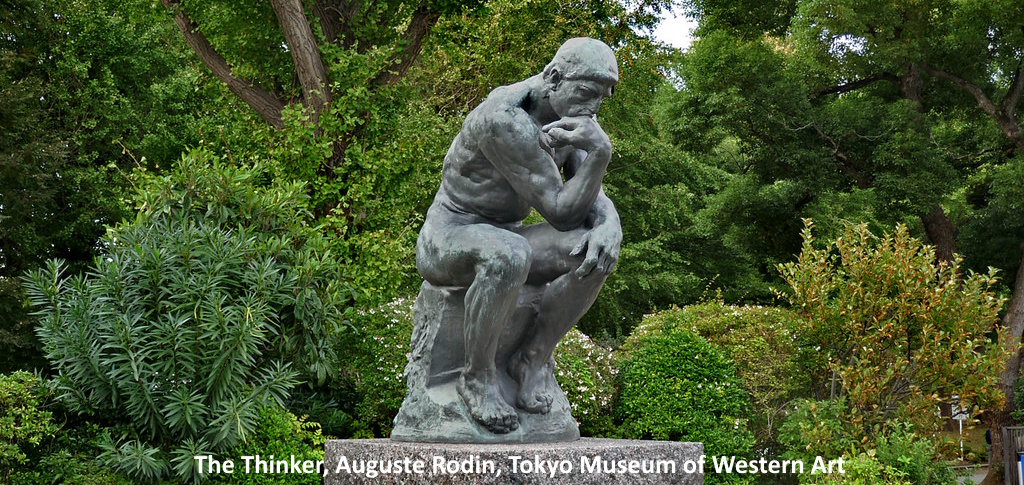Breaking news: Sunrise tomorrow
by charles | Comments are closed12/23/2023
The optimist thinks this is the best of all possible worlds. The pessimist fears it is true. – J. Robert Oppenheimer
In the late 80’s Don Valentine, founder of Sequoia Capital, asked me to stop by his office for a chat. I was recruiting for venture capital firms at the time while writing on the side for the San Jose Mercury News and had quoted him in previous pieces.
Once we settled in he announced with gruff solemnity that there was too much money chasing too few good startup opportunities. And that was not likely to change.
Keep in mind, this was only a few years after Sequoia had bankrolled Atari, Apple, and Cisco Systems. But for some reason he voiced deep concern. (Rising valuations and increased competition might have also sullied his mood.)
Whatever his reasons, we all know what happened in the decades that followed: invention and innovation, blockbusters and unicorns, thousands of jobs, billions in wealth. Silicon Valley’s cauldron of creation.
And yet, despite America’s world-beating record of entrepreneurial alchemy “It’s like déjà vu all over again,” to quote the inimitable Yogi Berra. You would half think the media pundits were praying for a recession, better yet, end-of-days.
Fortunately, the American consumer seems to have other plans. Hiring is brisk, investment performance strong, inflation down, startups pitching, and rates plausibly dropping.
“Since the Great Depression of the early 1930s there have been 14 US recessions.” Yet, despite the challenges, with each rebound life just gets better.
We’re betting on a sunrise tomorrow.
All the best for the holidays. And here’s to a fine 2024.
— Charles Skorina
Read More »Chief Investment Officer Pay at Private Foundations
by charles | Comments are closed12/05/2023
Price is what you pay. Value is what you get. — Warren Buffett
What do chief investment officers earn at nonprofit institutions? We recruit these executives for a living, so we avidly track their pay and performance. In this letter, we highlight the compensation of fifty chief investment officers and investment heads at private US foundations.
Many nonprofits, family offices, and Wall Street firms employ top investment professionals, but it’s difficult to extract meaningful data on compensation from reluctant sources. Ergo, we go with what we can get.
In this comp report we’re going with a revealing data set from our good friend John Seitz, CEO of FoundationMark. We wrote about Mr. Seitz in last month’s newsletter on “Foundation Investment Performance,” and we think his research and rankings are useful companions to our endowment studies, of interest to asset owners and all purveyors of investment products and services.
The Bigger the Better
Nonprofit investors wear many hats but have essentially one metric by which they are judged, long-term performance. However, that does not seem to be the metric for how they are paid. When it comes to compensation, size matters.
A few years ago, we ran some correlations using our archival datasets to see how pay correlated to AUM, tenure, and performance at endowments.
The coefficient for AUM to comp was 0.69, which is moderately high. But tenure and performance did not appear to have much impact on CIO pay. In most cases, size trumps all other metrics.
Our correlations
Comp-vs- AUM: 0.69
Comp-vs-Tenure: 0.31
Comp-vs-5yr Returns: 0.27
Kevin Hallock, President, University of Richmond, an expert in the field of executive compensation, and author of “Pay: Why People Earn What They Earn and What You Can Do Now to Make More,” puts it this way:
Read More »
It’s all good
by charles | Comments are closed11/22/2023
A lot of other people are trying to be brilliant. We’re just trying to stay rational. – Charlie Munger
At a BlackRock investor conference a few weeks ago, President Rob Kapito mentioned that in 1995 seven percent yields were ripe for the taking and today, almost thirty years later, it’s back to the future with those same seven percent yields.
What to make of that? Maybe some historical context would help, so we thumbed back to those bygone 90s and the near-after for insight.
This is what the California Legislative Analyst’s Office wrote. “Following a sharp slowdown in late 1995, the economy regained momentum during 1996. Despite considerable quarter-to-quarter volatility during 1996, real gross domestic product (GDP) grew by about 2.5 percent for the year as a whole.”
Meanwhile, college endowments were killing it. For the $400 million and over cohort (the big dogs at the time), NACUBO reported 19.5 percent in fiscal year end 1996, 21.6 percent in 1997, and 19.4 percent in 1998.
Back in the present we have two wars raging and Grinch-level consumer sentiment of 60.4. Nevertheless, from our standpoint as search consultants, hiring for senior investment talent remains strong and OCIO outsourcing shows no signs of slowing.
As Larry Siegel, the Gary P. Brinson director of research at the CFA Institute Research Foundation, pointed out the other day in his review of “Henry Kissinger on the Promise and Threats of AI,” the human race was toast about 70,000 years ago, contracting “to the point where we can see the residue of the “bottleneck” in the genes of people living today.” And yet, here we are.
I met a host of smart, upbeat, hard-working professionals at the NYC conference, all working on a better tomorrow. As for BlackRock? When the company went public on October 1st, 1999 at 14 bucks a share and AUM of $165 billion, Fed funds were at five and a quarter percent. Twenty-four years later, the stock closed at $724.64 (November 21st) and the firm manages $9.42 trillion (June 30th). It’s all good.
Happy Thanksgiving and best wishes for the holidays.
— Charles Skorina
Read More »Chief Investment Officers for Dummies
by charles | Comments are closed10/22/2023
Thinking is the hardest work there is, which is the probable reason why so few engage in it. – Henry Ford, SF Chronicle 1928
What do chief investment officers actually do for a living? Most board members, executives, reporters, the public, apparently have no idea. So, here’s our learned take after decades recruiting them.
The number one job of a chief investment officer is to protect the money their patron spent a lifetime accumulating. Job two is to construct and implement a portfolio that will compound at seven to ten percent a year for the rest of eternity. Job three is to keep jobs one and two from going off the rails.
A True Story
Here’s an example of what can go wrong, a true story. I sat in on a college board meeting a few years ago at the invitation of the CIO who would soon retire. This CIO had managed not long before to wangle a modest initial allocation to Sequoia Capital, one of Silicon Valley’s seminal venture capital firms.
The CIO had produced excellent performance over his tenure, and he looked at the Sequoia investment as a parting gift to the school, and proudly mentioned it at the board meeting.
This, unfortunately, did not sit well with the new board chairperson, a trial lawyer, who knew and cared nothing about institutional investing, venture capital, or diversified portfolios, but a lot about how to lean on witnesses and win an argument.
“Why would you waste your time on a piddling investment like that? I think we [the board] should agree that no investment will be made in the future for under three million dollars.”
The CIO looked at me, my cue to speak up, and I told the members about persistence in VC performance and Peter Thiel’s five-hundred-thousand dollar bet on Facebook, which reportedly returned about a billion to Mr. Thiel.
“That’s like saying if someone had invested in Apple in the beginning they’d be rich today,” replied the chairperson. And that was that. The board acquiesced, the resolution passed, and the CIO’s best intentions took an unexpected turn.
There is an interesting postscript, however. A year or so later the board majority decided to outsource the portfolio and do an end run around the chairperson whom, they decided, was too much at odds with the rest of the members to pursue a coherent investment policy.
The Tao of Investing
True investment professionals develop a discipline that rivals any Olympic athlete: the ability to temper their emotions, place well researched bets, and hold fast come rain or shine.
Portfolio construction and sitting tight may not be as exciting as buying a sports team, building office towers, or striking oil, but over the long haul, diversification and compounding win most races.
Jon Hirtle, executive chairman of Hirtle Callaghan, describes investing this way. “Serious investing is about consistency, and serious investors position their portfolios to succeed in a highly uncertain future.”
Warren Buffett views investing as a journey, always engaging, never certain. “Over time, it takes just a few winners to work wonders. And, yes, it helps to start early and live into your 90s as well.”
And Larry Fink, CEO of BlackRock, points to “a consistent voice, a clear purpose, a coherent strategy, and a long-term view,” as hallmarks of superior leadership, qualities that shine in top-ranked chief investment officers.
Watching Paint Dry
Read More »Rates? Recession? What me worry?
by charles | Comments are closed10/21/2023
We’re gathering comments and ideas from readers for a conference in NYC and we would love to hear from you. Observations, news, hiring? We’re all ears. See our email at the bottom of this newsletter.
As we mentioned last week, we’ve noticed more chief investment officers on the move than usual this fall.
Could surging yields have something to do with it? We’re in the search business after all, so, we pulled our billing history from the beginning of time and mapped our flows against historic rates. To our surprise the more rates spiked the busier we got.
Mortgage Rates: start – end of decade
1970s: start 7.33% – end 12.9%
1980s: start 12.9% – end 9.78%
1990s: start 9.83% – end 8.06%
2000s: start 8.15% – end 5.14%
2010s: start 5.09% – end 3.74%
2020s: start 3.72% – end 7.63% Oct 2023
*Data from Rocket Mortgage and Freddie Mac
True, for us the last decade has been a good one, but our business has evolved. We’re doing more family office recruiting and OCIO search work, even some M&A.
We recall something Peter Lynch wrote in his first book after retiring from Fidelity, One Up on Wall Street. He said that when he checked his trade records at Magellan against what he and others were saying in interviews and on panels, his money and his mouth weren’t talking the same book.
His conclusion: he was no better than anyone else at parsing headlines, but his trade discipline kept him focused on what he was good at, buying bargains and holding on. Sounds like some other CIOs we know.
Read More »




